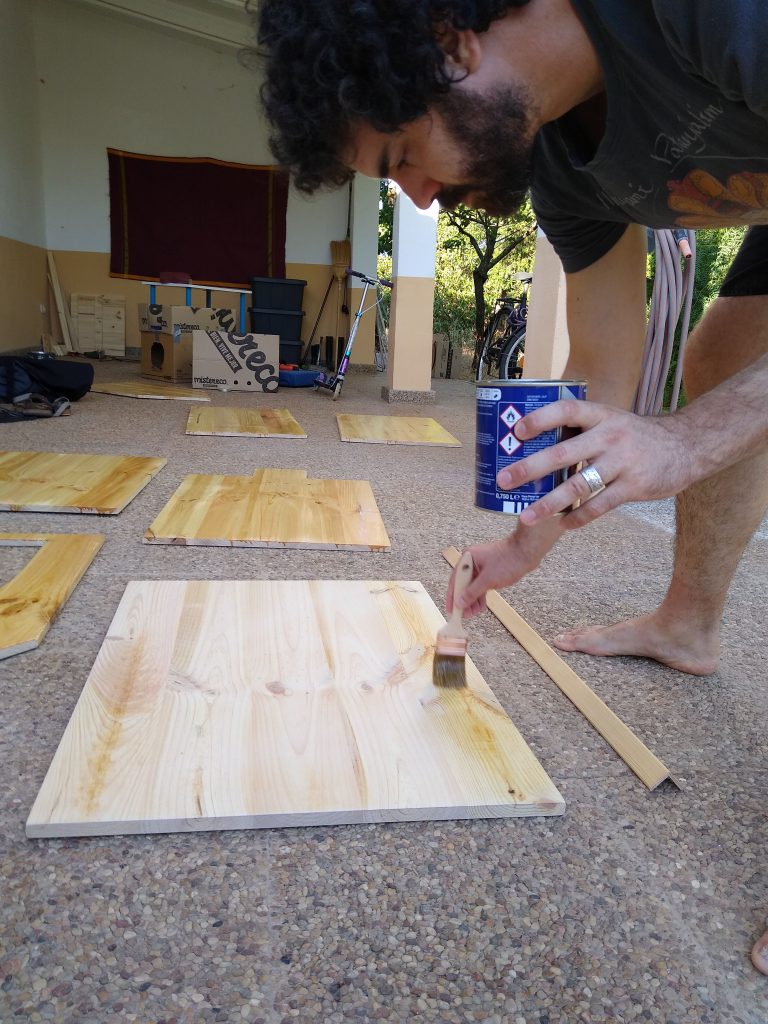Choosing the right floor varnish for wooden floors can transform your space from dull to dazzling – discover the perfect finish that stands the test of time.
Understanding Wood Floor Varnishes: The Basics
Floor varnish is a protective coating that serves as both a shield and enhancer for wooden floors. It creates a durable layer that protects against wear, moisture, and daily foot traffic while highlighting the natural beauty of the wood grain. Modern varnishes come in various formulations, each offering unique benefits and characteristics. The primary types include water-based polyurethane, oil-based polyurethane, and specialized finishes like acid-cured variants. According to recent industry data, proper varnishing can extend your floor’s life by up to 25 years, making it a crucial investment in your property’s longevity.
Water-Based Polyurethane: The Modern Choice
Water-based polyurethane has revolutionised floor finishing, becoming increasingly popular in recent years. These varnishes offer several advantages that make them the preferred choice for many professionals and DIY enthusiasts. They dry quickly, typically within 2-4 hours between coats, produce minimal odour, and contain low levels of volatile organic compounds (VOCs). Studies show that water-based finishes have seen a 45% increase in adoption since 2020, primarily due to their environmental benefits and user-friendly nature.
Top Water-Based Brands and Their Benefits
- Bona Traffic HD: Professional-grade finish, exceptional durability, ideal for high-traffic areas
- Loba EasyFinish: Perfect for DIY applications, excellent self-leveling properties
- Vermont Natural Coatings PolyWhey: Eco-friendly formula, superior scratch resistance
- AFM Safecoat: Low toxicity, ideal for sensitive environments
Oil-Based Polyurethane: Traditional Durability
Despite the rise of water-based alternatives, oil-based polyurethane remains a stalwart choice for many professionals. These varnishes are renowned for their exceptional durability and rich, warm finish that enhances the wood’s natural colour. Recent studies indicate that oil-based finishes can last up to 10 years without requiring refinishing when properly maintained. They penetrate deeper into the wood, providing superior protection against heavy wear and moisture damage.
Specialized Finishes for Specific Needs
Acid-Cured Swedish Finishes
Swedish finishes represent the pinnacle of professional floor finishing technology. These two-component systems offer unparalleled durability and resistance to chemicals, making them ideal for commercial spaces and luxury homes. Professional application is essential, as these finishes can be up to 3 times harder than traditional polyurethanes.
Hard Wax Oils and Eco-Friendly Options
- Osmo Polyx-Oil: Natural ingredients, easy maintenance, excellent for high-end residential projects
- Rubio Monocoat: Zero VOC formula, single-coat application
- Fiddes Hard Wax Oil: Traditional finish, excellent water resistance
- Treatex Natural Oil: Environmentally sustainable, deep wood penetration
Choosing the Right Varnish for Your Space
High-Traffic Areas and Commercial Spaces
For areas experiencing heavy foot traffic, durability is paramount. Commercial-grade water-based polyurethanes or acid-cured finishes are typically the best choice. Data shows that professional-grade finishes can withstand up to 300% more wear than standard residential variants. Consider factors like cure time, maintenance requirements, and slip resistance when selecting a finish for commercial applications.
Residential Applications and DIY Considerations
- Assess room usage and traffic patterns
- Consider natural light exposure and UV resistance needs
- Factor in maintenance preferences and frequency
- Evaluate application skill level required
- Account for drying time and room accessibility
Application and Maintenance Guide
Successful varnish application requires careful preparation and attention to detail. Begin by thoroughly cleaning and sanding the floor, ensuring all dust is removed. Apply thin, even coats using appropriate tools, and allow adequate drying time between coats. Proper application can increase varnish longevity by up to 40%. Regular maintenance should include daily sweeping, weekly damp mopping, and periodic professional cleaning.
Making Your Final Decision
- Assess your budget and long-term cost implications
- Consider local climate and humidity levels
- Review manufacturer warranties and support
- Evaluate VOC content and environmental impact
- Factor in application complexity and professional assistance needs
Expert Tips and Common Mistakes to Avoid
Success in floor varnishing often lies in avoiding common pitfalls. Industry experts report that 70% of floor finishing problems stem from inadequate preparation or rushed application. Always test the varnish in an inconspicuous area first, maintain consistent application techniques, and never skip the recommended number of coats. Ensure proper ventilation during application and curing, and avoid rushing the process to achieve optimal results.
Conclusion: Protecting Your Investment
Selecting the right floor varnish is crucial for preserving and enhancing your wooden floors. Whether you choose a water-based polyurethane for its eco-friendly properties, an oil-based finish for its traditional warmth, or a specialized solution for specific requirements, proper application and maintenance are key to long-lasting results. Consider your specific needs, environment, and usage patterns when making your selection, and don’t hesitate to consult professionals for guidance on complex applications. With the right choice and proper care, your varnished wooden floors can remain beautiful and protected for decades to come.
FAQ
What are 2 disadvantages to using varnish as a wood finish?
Some types of varnish can yellow over time. Beginners will find that varnish can be difficult to apply. More coats of varnish are required since it is thinner than other sealants. Varnish dries very slowly.
What is the difference between varnish and polyurethane varnish?
Varnish works well for exterior finishes on decks and patio furniture. Polyurethane works better on wooden surfaces that are indoors. While varnish is durable and inexpensive, it’s best suited for softer woods. Polyurethane dries quicker and requires fewer coats but won’t hold up in the outdoors.
Which of the following is the most durable varnish?
Oil varnish: Hard resins such as amber, copal etc are used which makes this type of varnish most durable.
What is the most durable varnish for wood?
Polyurethane varnish is a synthetic varnish that offers the best of both worlds in terms of durability and clarity. It dries quickly, resists yellowing, and protects against moisture and wear.
Is varnish or polyurethane better for hardwood floors?
While it is similar to varnish in terms of application and appearance, polyurethane is generally harder and more abuse resistant, which means it is commonly used for sealing wood floors. It’s less flexible than varnish, so it may not be the best choice to use on wood pieces that move or flex.
Sources
[1] https://nydreeflooring.com/blog/polyurethane-varnish-use-hardwoods
[2] https://www.paneltown.com/the-4-tiers-of-water-based-polyurethane-hardwood-floor-finish/
[3] https://www.ronseal.com/products/perfect-finish-diamond-hard-floor-varnish/



